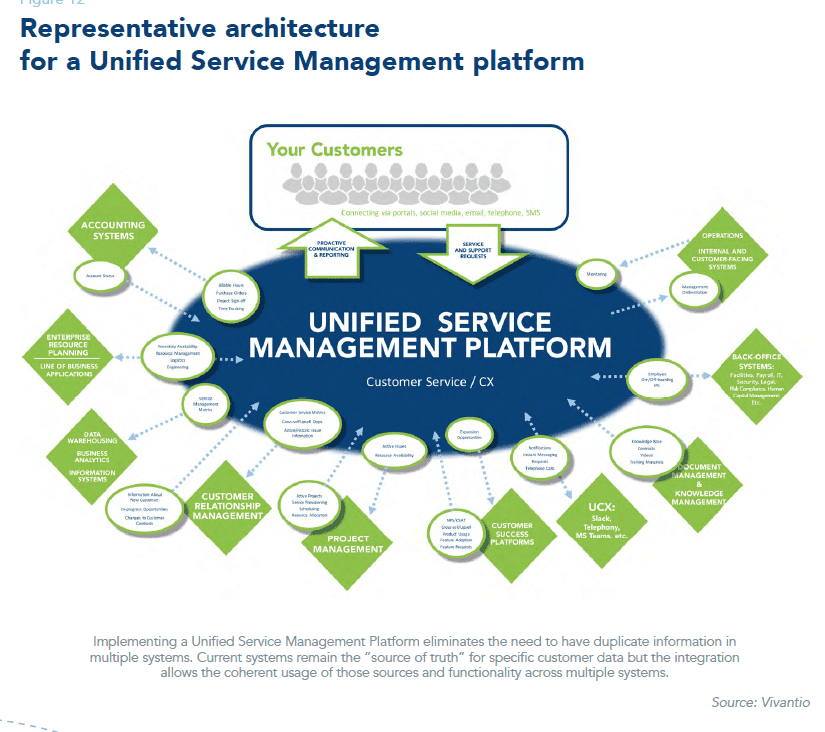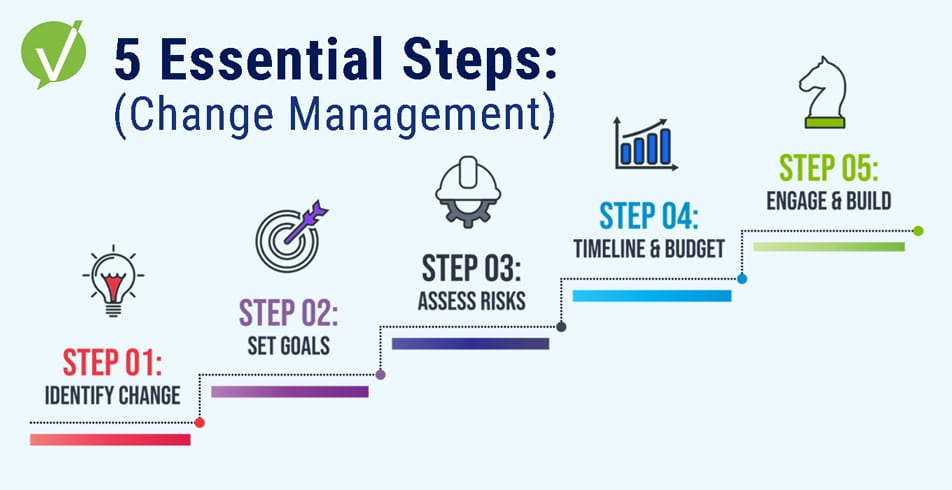ITSM Integration: Alignment of Services & Applications
The concept (if not yet the realization) of a single view into the enterprise has existed for some time. In the realm of ITSM, thought-leaders at AXELOS envisioned how systems across an enterprise can integrate to provide comprehensive visibility into virtually all data that touches any part of the Customer Journey.
A reminder that ITSM is about the concepts and processes of service management, and Best Practice Frameworks support how to implement those processes based on industry best practices and frameworks. But, it doesn’t stop there; how can ITSM integration be achieved with the rest of the organization and enterprise?
For forward-thinking service organizations, there are technology platforms that can — today — provide needed connectivity and visibility into a Service organization (and many of its adjacent systems) in a fairly comprehensive manner. Indeed, for some companies, Service Teams serve as pilot programs to build the case for larger initiatives.
What Can a Unified Service Management Platform do for you today?
The following diagram (Fig. 12) outlines how a unified service platform can begin to provide visibility into relevant systems and data so that your organization is equipped to provide maximum value to its end customers.
This type of solution can help your team better address all use cases, track and report on the KPIs essential to improved service, and tailor service provision at the individual level as well as have a process of continual improvement across all services and applications to provide a consistent standard of service across the enterprise.

Enumerating Some of the Benefits of a Unified Service Management Platform
- Avoid shuttling among systems searching for insight
Achieved by: Using integrations to pull data from other systems into a single platform that provides a 360-degree view of a user to aid a support or service request. Data may include: Contractual information; sales information; customer success information; application usage; customer size; length of contract, length of tenure, etc.
Ultimate benefit: Support teams can see the whole customer, not just an individual service/ support request. This can have a profound impact on how issues are prioritized and resolved. Furthermore, this data can be used to “prompt” agents or drive workflows and system views.
- Unite system data from other line-of-business software
Achieved by: Integrating (via APIs and other methods) with other systems to boost service efficiency, workflows, and automation. Providing proactive notification of events from monitoring systems; accessing requests from channels like MS Teams and Slack; gathering hardware and software properties through automated software inventory. Being able to leverage best-of-breed applications that can add value to your overall service offering.
Ultimate benefit: Delivers a holistic view of your service operation that can be used to preempt problems, and manage hardware expirations, version control, and compliance.
- Leverage a single source of data and report across multiple systems
Achieved by: Tying core user and operations systems into a single service platform that allows integrated reporting across all solutions.Ultimate benefit: Holistically monitor KPIs to gain the insight necessary to make positive changes. Get definitive answers to questions such as: How long does a system outage take to resolve? What number of complaints does it generate? How does the length of a customer relationship relate to the number of support tickets generated? Who creates more tickets—a large or small customer? What is the ROI on our current service spend
- Doing more with less—achieving the same output with fewer internal resourcesAchieved by: Making use of technologies not found in simple ticketing solutions such as routing, multiple resolver groups, service level agreements, self-service interfaces, service catalogs, business automation tools, advanced reporting and analytics, load balancer, surveys etc.
Ultimate benefit: By adopting these technologies, you can cut down on human capital; reduce ticket open times; gain more granular visibility on overall customer service status; ensure that teams are working on the right tickets at the right time; make sure that customers with higher priority issues are dealt with appropriately.
- Leveraging business intelligence to uncover new efficiencies
Achieved by: Improving the tracking and reporting of key metrics such as: number of tickets logged by a specific user/department—including what categories and by what contact channel. Tabulating customer satisfaction survey results can create a picture of where there might be operational problems (i.e., constant platform outages), staff problems (i.e., SLAs being missed by individuals), and understanding staff workload and performance.Ultimate benefit: Improved user satisfaction and ongoing process refinement.
- Empowering the customer and supporting self-diagnosis
Achieved by: Making use of self-service technologies and the knowledge base. Helping customers resolve their own problems before requiring human interaction. Avoiding back-and-forth delays by gathering complete and correct information about specific requests using custom scripts. Using that data to route a ticket to the right resolver group and provide them with the information they need to help resolve the ticket immediately.
Ultimate benefit: Reduce the number of calls coming into the service desk
completely while remaining able to report on self-help activities to measure
effectiveness. Faster, more cost-efficient resolution via self-service.













